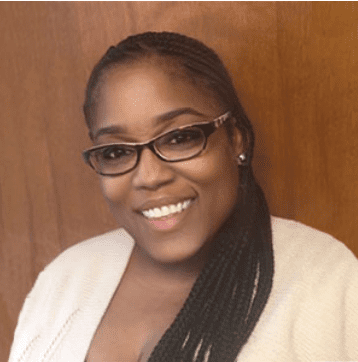
Equetta S. Jones
Highlands Elementary School
Wilmington, Delaware
equetta.jones@redclay.k12.de.us
Best Practices
1) In tune leaders start their days well before the arrival of staff so they can be accessible for consultation before students arrive. The administration should be visible when scholars enter the building. My morning stroll consists of greeting every staff member in the building. This quick check-in affords me the opportunity to get a pulse on the building. Highlands’s staff grew accustomed to the visits quickly and will comment on mornings that I allow time to get in the way. A few staff members stated, “I miss seeing your face this morning.” The comments are a gentle reminder that the staff enjoys the personalized visits. I have found that leadership is often more about who we are perceived to be than what we are actually doing. The perception of our staff is their reality. I would like to consider myself a role model, as I believe in the power of doing as I do and not as I say. When staff actually can visualize what the leaders are doing, it can inspire them to become next level educators.
Over the past several years, I have increased my visibility by conducting crucial conversations and sharing ideas in a positive manner. I ask questions and let my staff know that I encourage them to do the same. I also actively listen to everyone’s opinions and views. As leaders, we often have our own vision, which makes it difficult to be open to change. However, even if the staff does not get the outcome they wished for, they are able to exercise their voice! As a standard practice, when I want to hear everyone’s voice. I create a poll or survey that is anonymous. You would be surprised how many adults are uncomfortable with public sharing. Upon the receipt of the results, administration meets with the leadership team and develops a plan to move forward. I encourage the staff to be genuine with their conversations and be authentic. Before closing out, we check for understanding and show sincere compassion as the staff may be struggling with the new concept. Once the staff is completely ready to move forward, we celebrate their accomplishments. Once a month we conduct an “ABC”—admin., breakfast, and coffee—and top it off with a jeans day. This shows the staff that they are appreciated and motivates them to achieve a common goal. Always remember, you are a star in your own mini-series and your staff is the audience.
2) Understanding trauma is not just about watching videos and attending professional developments. It is about changing mindsets and asking “What happened to you” instead of “What is wrong with you”.
Last year we noticed an increase in student behavior referrals. That increase required us to reconsider the school-wide walk-through tool. Initially, we focused solely on engagement, then quickly realized the need to build staff-student relationships. We began to work closely with the building leadership team to develop a survey to determine the root cause of our dilemma. The results showed that 93% of our building was in need of trauma training and an understanding of brain science. We were so focused on the scores we almost overlooked a growth opportunity for all. Our staff loves our students; however, they did not understand why certain students would run from being nurtured. Upon data analysis, we discovered that 65% of the referrals were written because students could not differentiate between a threatening and nonthreatening environment.
Our entire staff, including paraprofessionals, nutrition, transportation, and custodians, was trained in trauma-informed care at the start of the 19/20 school year. As a result, we are now proactive with students; they have the option of cool down corners, trusted adults, and are taught coping strategies. Our librarian recently worked closely with a homeroom teacher to develop a yoga program. We are now sensitive to our scholars’ traumatic experiences and are able to assist in breaking the trauma cycle and preventing recurring trauma while engaging our scholars during instruction.
We have tried strategies of inclusion instead of seclusion. For instance, to support the struggling learners, our interventionists push into the classroom, rather than pull the students out. Another example is reversed suspensions, which allows the parent or guardian to come to school with the student instead of keeping them at home. When a parent cannot support the reverse suspension, we provide the option of Practice Academy (PA), allowing the student to come to school with an abridged schedule. All students in PA are provided work that needs to be completed and have additional exposure to the social-emotional curriculum. Parents have to agree to support the students alongside the staff by signing the restoration plan that their scholar has completed. Students are housed in the same location and receive all instructional servicing from a certified teacher. Students are encouraged to communicate with their peers and design a restoration plan by the end of the day. The irony is many of the students would rather participate in PA than their own classroom. One of my students recently shared, “Ms. Jones, it is quiet when we are in there. I get my work done and can think before I react. I learn a lot from our sessions and know my parents have to review what I did that day.” Based on that statement, you can see that parental involvement is paramount.
To ensure parental engagement, we have developed a parent group that supports our compassionate schools work. They are responsible for creating meaningful ways to support the analysis of fair discipline practices. This group has supported our shift towards restorative practices.


